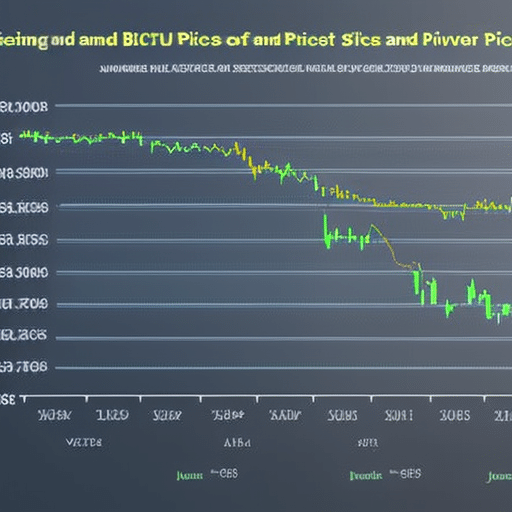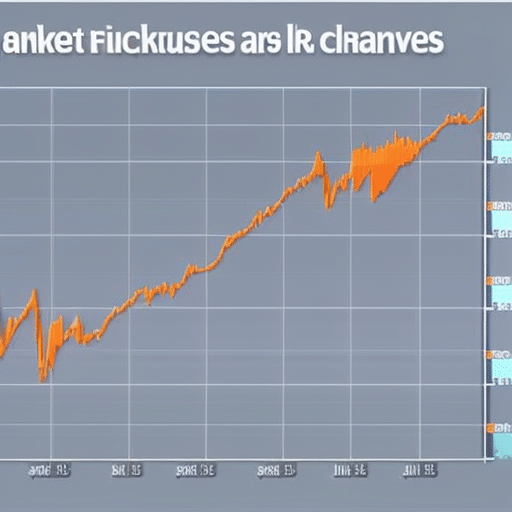
Bitcoin Market Analysis
Bitcoin is a decentralized digital currency, created in 2009, that has seen rapid growth and adoption since its inception. It operates independently of any central bank or government, relying on a global network of computers to record transactions and verify ownership. As Bitcoin’s popularity continues to grow, many investors are looking to capitalize on the cryptocurrency markets by analyzing market trends and predicting price movements. This article will provide an in-depth analysis of the Bitcoin market and examine various factors such as price movements, trading strategies, mining activity, wallets, and associated risks. To illustrate this analysis we can take the example of Mary*, who purchased 1 BTC for $5,000 at the beginning of 2021. By mid-year her investment had already doubled in value due to increased demand for Bitcoin from institutional investors. This article will offer an overview of the current state of the Bitcoin market along with insights into how individuals can use different strategies to increase their returns when investing in cryptocurrencies. We will also discuss some potential risks associated with these investments so readers can make informed decisions about whether or not they should invest their money in this volatile asset class. Key Takeaways Bitcoin has seen rapid growth and adoption since its inception. Technical indicators like Moving Averages (MA) and Relative Strength Index (RSI) help identify entry and exit points in the market. Understanding investor psychology and managing emotions are crucial in developing a successful trading strategy. Risk management, including setting stop loss levels, helps reduce losses and limit exposure in bitcoin trading. Overview of Bitcoin Bitcoin, created in 2009 by the mysterious Satoshi Nakamoto, is a decentralized digital currency that has seen tremendous growth since its inception; for example, at the beginning of 2017 one Bitcoin was worth around $950 USD and just over a year later it had reached nearly $20,000 USD. This exponential increase in value has been driven largely by speculation around Bitcoin’s buying power and investment potential. With its limited supply and increasing demand, investors have flocked to purchase Bitcoins as a way to diversify their portfolios and capitalize on its appreciation. As such, careful market analysis is needed to assess how much of an impact this digital currency will have on the global economy going forward. Market Analysis Cryptocurrency has experienced significant volatility over the past few years, with fluctuating prices and trading volumes. Market analysis is essential in understanding the current trends of bitcoin fluctuations and predicting future price movements. By closely examining market data for both long-term and short-term volatility trends, investors can gain insight into potential investing tips to increase their returns. Additionally, there are a number of technical indicators available that can be used to identify key support and resistance levels in order to improve accuracy when predicting future market direction. By leveraging these tools along with careful market analysis, investors can better prepare themselves for any changes in the cryptocurrency markets. With this knowledge, they will be able to make more informed decisions when it comes to investing in bitcoin or other cryptocurrencies. This allows them to better manage risk while still attempting to maximize returns on their investments. As such, effective market analysis is an important part of successful cryptocurrency investing strategies. From here, we can move on to examine the current trends in bitcoin price movement through price analysis. Bitcoin Price Analysis Price analysis of digital assets can provide valuable insights into the current trends of bitcoin fluctuations and help investors make more informed decisions when investing. By studying the price movements, investors can gain an understanding of how market forces such as speculation, news events, and trading psychology affect volatility and forecasting. Here are a few key points to consider when evaluating the bitcoin market: Volatility – Bitcoin is known for its high degree of volatility, so investors should be aware that prices could change rapidly. News Events – A wide variety of news events can affect the price of bitcoin such as government regulations or economic indicators. Trading Psychology – Investor sentiment may also have an effect on prices as traders try to capitalize on short-term changes in order to maximize profits. By understanding these factors, investors can evaluate their risk tolerance levels and choose investments based on their goals. As a result, they will have a better chance at making successful trades in a volatile market environment. Additionally, this analysis provides an opportunity to identify potential opportunities for long-term gains in the future. With this information in hand, investors can better gauge how changes in the marketplace may impact their portfolios over time — transitioning into analyzing aspects related to bitcoin trading analysis. Bitcoin Trading Analysis The analysis of Bitcoin trading involves a review of different platforms used for buying and selling the digital asset, as well as an exploration of various strategies employed by traders. There are numerous platforms that offer different features, such as different fees, order types, and liquidity levels. Additionally, there are a variety of strategies available to traders that can be tailored to their specific goals or risk profiles. For instance, some traders may opt for day-trading while others prefer swing trading or longer-term investing. Examining these elements can provide useful insight into Bitcoin trading activities. Trading Platforms Trading platforms are essential for investors to access the cryptocurrency market and capitalize on its potential. Platforms such as Coinbase, Binance, Kraken, Bittrex, and Bitfinex offer users the opportunity to buy and sell digital currencies at different prices. These exchanges may charge fees based on the type of transaction that occurs; for example, some exchanges will have a fee for margin trading. Understanding these fees is important in order to maximize potential profits while minimizing losses. Additionally, each platform has different security measures in place which can affect user experience when trading cryptocurrencies. It is important to research and understand all aspects of an exchange before using it as part of a trading strategy. To ensure safe transactions and successful trades, understanding the underlying technology behind the exchanges is key. With this knowledge, traders can move onto developing strategies for successful cryptocurrency trading with confidence. Trading Strategies By utilizing various trading strategies, investors can maximize their profit potential and reduce risk while trading cryptocurrencies. Statistics show that nearly 70% of traders are unsuccessful in achieving long-term profitability when trading digital currencies. Utilizing the right combination of technical indicators and psychological elements to develop a successful trading strategy is key for success when engaging with the cryptocurrency markets: Technical Indicators: Using charting tools such as Moving Averages (MA) and Relative Strength Index (RSI) help traders identify entry and exit points for trades based on past market data. Trading Psychology: Understanding investor psychology plays a huge role in developing an effective trading strategy. Managing emotions during trades is important to avoid making mistakes due to irrational behaviour. Risk Management: Establishing stop loss levels helps reduce losses due to volatile price movements while also limiting exposure to large amounts of capital at any given time. By ensuring each trade has minimal risk, investors can maximize their returns over the long term without taking on too much risk in one go. By understanding these core components of an effective trading strategy, investors can improve their chances of achieving success in the crypto markets and prepare themselves adequately for any market conditions that may arise. With this knowledge, they will be better prepared to make informed decisions regarding their investments which ultimately leads to greater profits and less losses over time. Bitcoin Mining Analysis Analyzing Bitcoin mining provides a valuable insight into the cryptocurrency market. The process of mining involves using specialized hardware to decipher complex mathematical equations and add new blocks or transactions to the blockchain. This process is both energy and resource intensive, as miners must invest in powerful machines that can compete with other miners for rewards on the network. As such, the cost of entry for Bitcoin miners is high, making it difficult for smaller players to enter the market. The hardware used for Bitcoin mining comes in two main forms: ASICs (Application Specific Integrated Circuits) and GPUs (Graphics Processing Units). ASICs are purpose-built computers designed solely for solving cryptographic problems associated with bitcoin mining. They are much faster than GPUs but also more expensive and less flexible when it comes to different types of cryptocurrencies. GPUs, on the other hand, are cheaper and allow miners flexibility when choosing coins to mine; however, they require more electricity than ASICs due to their lower hash rate. Mining Hardware Advantages Disadvantages ASICs Faster Expensive GPUs Cheaper Higher Electricity Consumption Bitcoin Wallets Bitcoin wallets are a crucial component of the cryptocurrency ecosystem and serve as an interface between users and their Bitcoin holdings. There are various types of wallets available, each with their own advantages and disadvantages when it comes to security, convenience, cost, and more. Security is a major concern for users of any wallet type since any stolen funds cannot be recovered from the blockchain itself. It is important for users to understand the different types of wallets available, as well as the various security features they offer in order to make an informed decision about which wallet best suits their needs. Types of Wallets Describing the wide range of wallets available to store Bitcoin, one could liken the selection to a smorgasbord of options. Generally speaking, there are two main types of wallet: hot wallets and cold wallets. Hot wallets are defined as those that are connected to the internet and can be used for day-to-day transactions. Examples include desktop and mobile wallets, as well as exchanges or ‘decentralized’ exchanges (DEXs). These provide users with access to their private keys which allows them to digitally sign off on transactions. Cold wallets are defined as those that are not connected to any type of network; instead they enable users to store their private keys offline in order to ensure security against theft or hacking attempts. Examples include paper wallets and hardware wallets such USB drives; these offer enhanced security because no malicious software can gain access without physical possession of the device itself. With this in mind, it is important for users to assess their individual needs when choosing a wallet in order to ensure maximum safety and security for their crypto assets. Security concerns should be addressed next. Security Concerns When considering the security of one’s Bitcoin, it is essential to assess the risks associated with storing and transacting digital currency. The main security concerns when dealing with bitcoin are related to fake trading, insider trading, wallet theft, and malicious software. Fake trading is a form of market manipulation where traders artificially inflate or deflate demand for a particular type of cryptocurrency in order to benefit from the price changes. Insider trading occurs when someone obtains inside information about a trade which may not be available to other investors in order to gain an unfair advantage over them. Wallet theft involves stealing bitcoins or private keys stored in wallets, either by hacking into the user’s computer or through social engineering. Malicious software can also be used to steal bitcoins from vulnerable computers without users knowing it has occurred. Risk Description Examples Fake Trading Market manipulation by traders inflating/deflating demand for a cryptocurrency Pump-and-dump schemes, spoofing orders Insider Trading Obtaining inside information about trades unavailable to other investors for unfair advantage Tipping off friends or family about upcoming stock movements Wallet Theft Stealing bitcoins/private keys stored in wallets by hacking into users’ computers or through social engineering techniques Phishing scams, malware attacks on wallets/computers with private keys stored on them Transitioning into the subsequent section that discusses the risks associated with investing in bitcoin, it is important to note that these are just some of the most common threats faced by those who use cryptocurrencies. Other risks include issues such as volatility and liquidity of prices as well as financial frauds and taxation implications. Risks Associated with Investing in Bitcoin Investing in Bitcoin comes with certain risks. One of the main risks is market manipulation, as large investors can manipulate the price of Bitcoin for their own benefit. Another risk is hacking, as hackers have been known to target crypto-currency exchanges and wallets to steal user funds. Knowing and understanding these risks is essential for anyone looking to invest in Bitcoin. Market Manipulation Evidence exists suggesting potential market manipulation in the Bitcoin market. Darknet markets can be used for pump and dumps, which is when an investor or group of investors quickly buy a large amount of bitcoin, resulting in a temporary price spike. This technique allows traders to acquire more coins than they would have been able to otherwise at those prices, and then dump them relatively quickly after the spike has occurred. Due to the anonymous nature of the Bitcoin network, this type of manipulation is difficult to trace and therefore difficult to prevent or combat. The potential for market manipulation in cryptocurrency markets creates further risk for investors that must be taken into consideration when deciding whether or not to invest in digital assets like Bitcoin. Furthermore, it heightens the need for increased regulatory oversight on crypto exchanges as well as other measures designed to make it harder for malicious actors to manipulate markets undetected. Moving forward, hacking risks will also need to be addressed if investing in cryptocurrencies is going to become more mainstream. Hacking Risks Cryptocurrency exchanges are vulnerable to hacking, with researchers estimating that more than $1.7 billion worth of digital assets have been stolen since 2017. The most common method of attack is through ‘hot wallets’, which are connected to the internet and can be accessed remotely by hackers. Hot wallets often contain large sums of money due to their convenience in allowing users to make trades quickly. Cold storage solutions, on the other hand, store coins offline and do not offer the same level of convenience as hot wallets; however, they provide an extra layer of security because it is much harder for malicious actors to gain access. Another popular method used by hackers is phishing scams, where malicious actors send emails that appear legitimate but contain links directing users to a website owned by them instead of the real cryptocurrency exchange or wallet service provider. Once the user has entered their credentials into this illegitimate website, hackers can then access sensitive data such as usernames and passwords or even funds from individuals’ accounts without authorization. Consequently, it is important for investors in cryptocurrencies to be aware of these risks and take proactive measures such as only using reputable exchanges/wallet services and double-checking URLs before entering any confidential information into websites. Frequently Asked Questions What is the best way to purchase Bitcoin? The best way to purchase Bitcoin is to research various buying strategies and select a reputable cryptocurrency exchange that meets one’s needs. It is important to consider factors such as fees, security measures, customer reviews, and payment methods when choosing the right platform. What is the most secure way to store Bitcoin? Enthrallingly, the most secure way to store Bitcoin is through cold storage and hardware wallets. Cold storage involves storing private keys offline on paper or a USB drive, while hardware wallets provide physical devices safeguarding private keys from malicious software attacks. Both offer unprecedented levels of protection for digital assets, making them ideal for long-term cryptocurrency investment. How can I protect my Bitcoin from scams? The most effective way to protect against phishing scams and identity theft when handling Bitcoin is to keep private information secure, use two-factor authentication, utilize a secure wallet provider, and be aware of potential scams. What are the tax implications of investing in Bitcoin? Investigating the tax implications of investing in Bitcoin requires an understanding of capital gains and investment strategies. Such knowledge can inform decisions regarding taxation, thereby helping to maximize profitability from any investment. What is the future outlook for Bitcoin? The future outlook for Bitcoin is uncertain, as it depends on numerous factors such as mining rewards and price movements. Analysis should consider the potential risk of volatility and speculation in order to make an informed





















